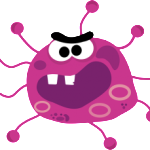
The number and percentage of teenagers in the United States of America that are affected by genital herpes is overwhelmingly large. Such numbers have never been seen before in the history of statistics. Considering the amount of precautions, education and careful measures being taken today, this no doubt comes as a great surprise.
Studies show that teenagers in the recent times have proven to have less antibodies for any sexually transmitted disease that they might contract through sexual contact. The reason for this is quite strange, and surprising as well.
Throughout the recent years, people have become far more conscience regarding hygiene and take great measures to keep their children out of the way of even the simplest diseases. Fewer children are seen to even have a simple cold, and must follow strict hygiene discipline. Due to this, children are not exposed to many diseases which children of older generations used to contract, and hence their bodies are able to create fewer antibodies to protect themselves from any foreign body when they are older.
Herpes simplex virus 1, also known as HSV 1 is the cause of many common cold sores, which children would often contract during the colder months. These infections would be temporary, affect the oral region and soon go away, which the body learns to make the necessary antibodies to fight the virus. The body then codes the type of antibodies than the HSV 1 needed to be destroyed, so if the body is affected by HSV 1 again in any manner, it will be easy to get rid of. HSV 1 is usually spread by skin contact or saliva.
Due to the increased discipline and maintenance of hygiene as previously mentioned, less and less children are susceptible to common cold and cold sores. Hence, their bodies never learn to produce antibodies to fight off HSV 1, which is also a major source of genital herpes. In fact, statistics show that about 60% of the genital herpes caused is due to HSV 1.
According to studies, 14-19 year olds had a twenty-three percent fall in having antibodies for HSV 1. Furthermore, the fall continues to another nine percent for individuals between the age of 20 to 29. However, the availability of antibodies remained the same for people in their 30s and 40s, showing that the fall in the presence of antibodies for HSV 1 is a more recent occurrence, and not something common that always happened.
There are eight types of herpes, and out of them, HSV 1 and HSV 2 are capable of causing lifelong infections that have no known cure. While HSV 1 is spread by external physical contact, HSV 2 is a sexually contracted disease. These two types of diseases are dangerous, and are capable of causing a lot of damage to the body.
Statistics for HSV 1 and HSV 2 are rather frightening. According to studies, one out of ten individuals contract HSV 1 once they are sexually active. This also has the possibility of becoming neonatal herpes, where the herpes is transferred to the unborn fetus of a mother, if the mother is affected by HSV 1 as well. Once born, HSV 1 and HSV 2 can cause a lot of harm to the new born baby. Numbers show that thirty percent of the new born infants die due to severe cases of herpes.
Of course, there comes the question that how HSV 1, a virus that causes cold sores in the mouth, can lead to genital herpes. The answer lies in the increasingly popular sexual practices of the youth. Oral sex, where a person’s mouth is connected to another person’s genital areas, can directly transfer the HSV 1 virus into the genital area, thus acting as a direct transport into a story of lifelong infection. Oral sex is now more popular among teenagers than before, hence the simultaneous increase in genital herpes in teens. Furthermore, the additional lack of antibodies for HSV 1 in the teenagers encourage the HSV 1 virus to grow and create problems at an accelerated rate.
Hence studies have come to the conclusion that a lack of antibodies for the herpes virus and the practice of oral sex have led to the increase in genital herpes among teenagers.



